Accept all cookies Accept only essential cookies See our Cookie Notice

About ESA
The European Space Agency (ESA) is Europe’s gateway to space. Its mission is to shape the development of Europe’s space capability and ensure that investment in space continues to deliver benefits to the citizens of Europe and the world.
Highlights
ESA - United space in Europe
This is ESA ESA facts Member States & Cooperating States Funding Director General Top management For Member State Delegations European vision European Space Policy ESA & EU Space Councils Responsibility & Sustainability Annual Report Calendar of meetings Corporate newsEstablishments & sites
ESA Headquarters ESA ESTEC ESA ESOC ESA ESRIN ESA EAC ESA ESAC Europe's Spaceport ESA ESEC ESA ECSAT Brussels Office Washington OfficeWorking with ESA
Business with ESA ESA Commercialisation Gateway Law at ESA Careers Cyber resilience at ESA IT at ESA Newsroom Partnerships Merchandising Licence Education Open Space Innovation Platform Integrity and Reporting Administrative Tribunal Health and SafetyMore about ESA
History ESA Historical Archives Exhibitions Publications Art & Culture ESA Merchandise Kids Diversity ESA Brand CentreLatest
Space in Member States
Find out more about space activities in our 23 Member States, and understand how ESA works together with their national agencies, institutions and organisations.
Science & Exploration
Exploring our Solar System and unlocking the secrets of the Universe
Go to topicAstronauts
Missions
Juice Euclid Webb Solar Orbiter BepiColombo Gaia ExoMars Cheops Exoplanet missions More missionsActivities
International Space Station Orion service module Gateway Concordia Caves & Pangaea BenefitsLatest
Space Safety
Protecting life and infrastructure on Earth and in orbit
Go to topicAsteroids
Asteroids and Planetary Defence Asteroid danger explained Flyeye telescope: asteroid detection Hera mission: asteroid deflection Near-Earth Object Coordination CentreSpace junk
About space debris Space debris by the numbers Space Environment Report In space refuelling, refurbishing and removingSafety from space
Clean Space ecodesign Zero Debris Technologies Space for Earth Supporting Sustainable DevelopmentSpace weather
Space weather and its hazards ESA Vigil: providing solar warning ESA Space Weather Service NetworkLatest
Applications
Using space to benefit citizens and meet future challenges on Earth
Go to topicObserving the Earth
Observing the Earth Future EO Copernicus Meteorology Space for our climate Satellite missionsCommercialisation
ESA Commercialisation Gateway Open Space Innovation Platform Business Incubation ESA Space SolutionsLatest
Enabling & Support
Making space accessible and developing the technologies for the future
Go to topicBuilding missions
Space Engineering and Technology Test centre Laboratories Concurrent Design Facility Preparing for the future Shaping the Future Discovery and Preparation Advanced Concepts TeamSpace transportation
Space Transportation Ariane Vega Space Rider Future space transportation Boost! Europe's Spaceport Launches from Europe's Spaceport from 2012Latest
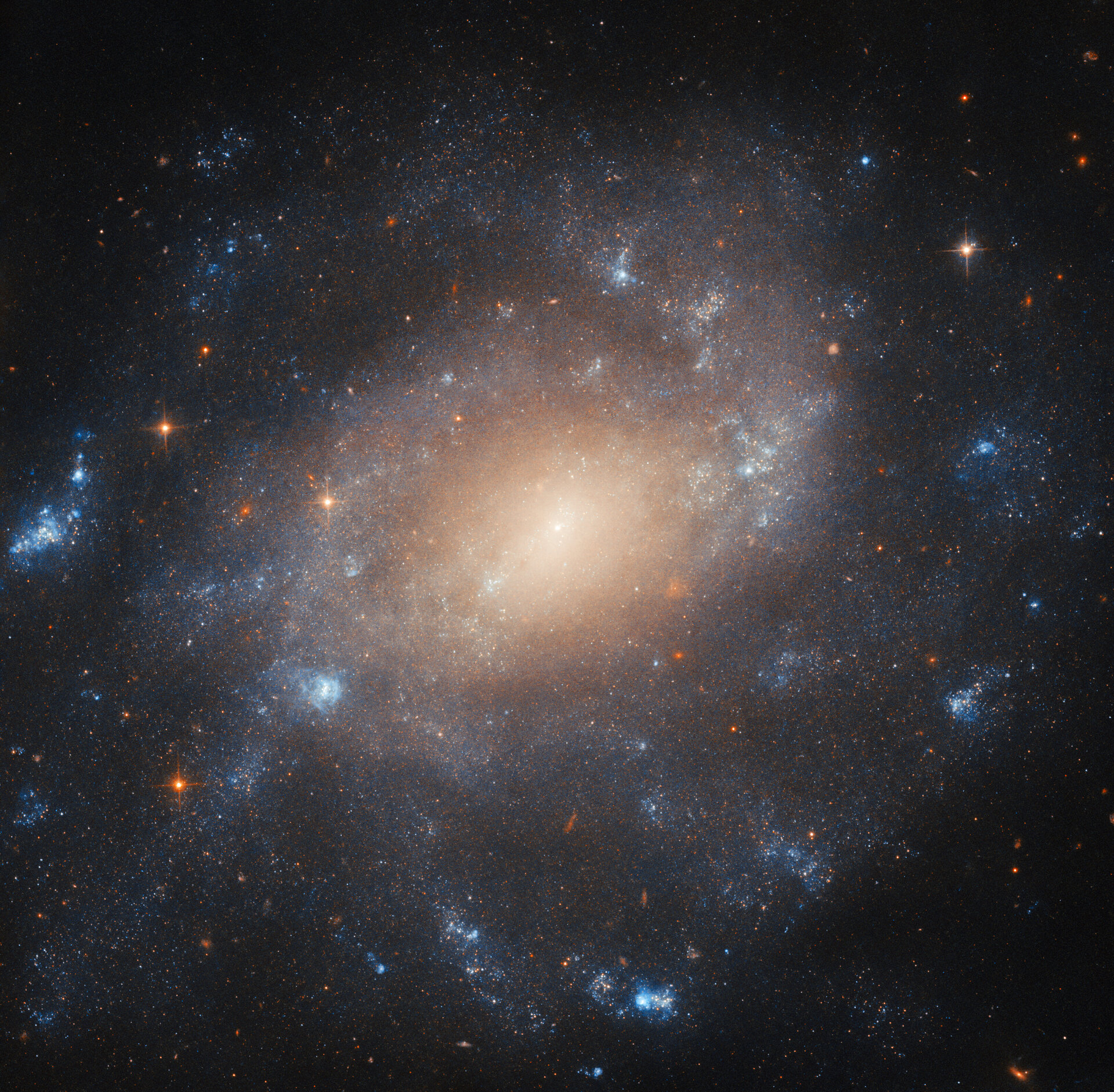
Captured on glass
Thank you for liking
You have already liked this page, you can only like it once!
This Hubble Picture of the Week depicts the spiral galaxy ESO 422-41, which lies about 34 million light-years from Earth in the constellation Columba. The patchy, star-filled structure of the galaxy’s spiral arms and the glow from its dense core are laid out in intricate detail here by Hubble’s Advanced Camera for Surveys. Images of this galaxy have, however, a decades-long history.
The name ESO 422-41 comes from its identification in the European Southern Observatory (B) Atlas of the Southern Sky. In the times before automated sky surveys with space observatories such as ESA’s Gaia, many stars, galaxies and nebulae were discovered by means of large photographic surveys. Astronomers used the most advanced large telescopes of the time to produce hundreds of photographs, covering an area of the sky. They later studied the resulting photographs, attempting to catalogue all the new astronomical objects revealed.
In the 1970s a new telescope at ESO’s La Silla facility in Chile performed such a survey of the southern sky, which still had not been examined in as much depth as the sky in the north. At the time, the premier technology for recording images was glass plates treated with chemicals. The resulting collection of photographic plates became the ESO (B) Atlas of the Southern Sky. Astronomers at ESO and in Uppsala, Sweden collaborated to study the plates, recording hundreds of galaxies — ESO 422-41 being just one of those — star clusters, and nebulae. Many were new to astronomy.
Astronomical sky surveying has since transitioned through digital, computer-aided surveys such as the Sloan Digital Sky Survey and the Legacy Surveys, to surveys made by space telescopes including Gaia and the Wide-Field Infrared Survey Explorer. Even so, photographic sky surveys contributed immensely to astronomical knowledge for decades, and the archives of glass plates serve as an important historical reference for large swathes of the sky. Some are still actively used today, for instance to study variable stars through time. And the objects that these surveys revealed, including ESO 422-41, can now be studied in depth by telescopes such as Hubble.
[Image Description: A spiral galaxy, with a brightly shining core and two large arms. The arms are broad, faint overall and quite patchy, and feature several small bright spots where stars are forming. A few foreground stars with small diffraction spikes can be seen in front of the galaxy.]
-
CREDIT
ESA/Hubble & NASA, C. Kilpatrick -
LICENCE
CC BY 4.0 INT or ESA Standard Licence
(content can be used under either licence)
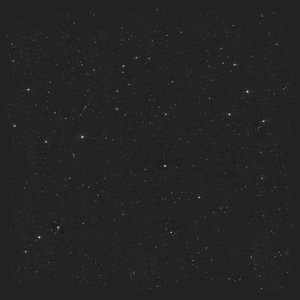
The Hubble full COSMOS survey field
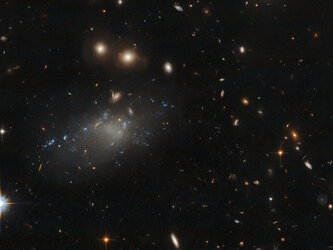
Hubble spies a tenuous diffuse galaxy
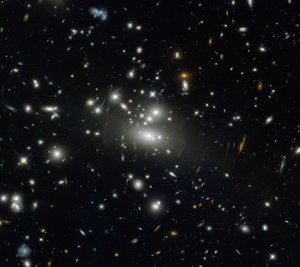
Abell S1077

Cosmic lens flare
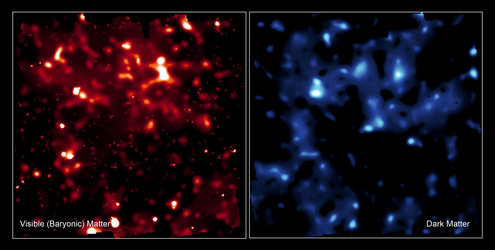














 Germany
Germany
 Austria
Austria
 Belgium
Belgium
 Denmark
Denmark
 Spain
Spain
 Estonia
Estonia
 Finland
Finland
 France
France
 Greece
Greece
 Hungary
Hungary
 Ireland
Ireland
 Italy
Italy
 Luxembourg
Luxembourg
 Norway
Norway
 The Netherlands
The Netherlands
 Poland
Poland
 Portugal
Portugal
 Czechia
Czechia
 Romania
Romania
 United Kingdom
United Kingdom
 Slovenia
Slovenia
 Sweden
Sweden
 Switzerland
Switzerland























